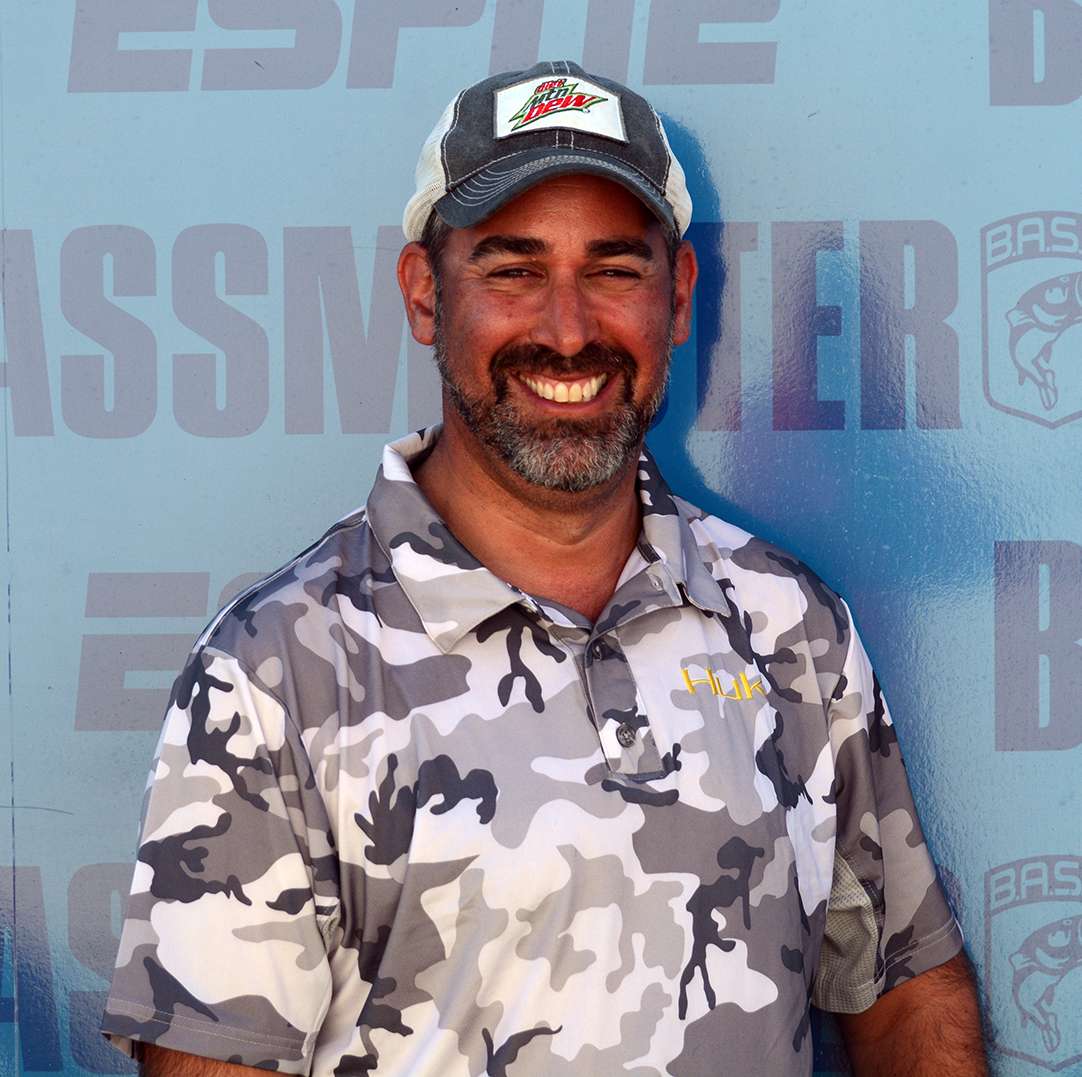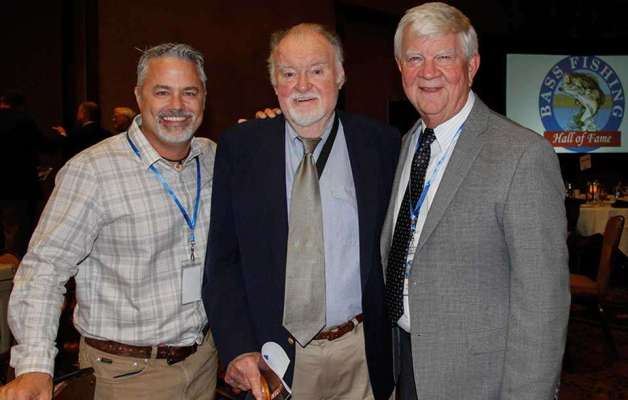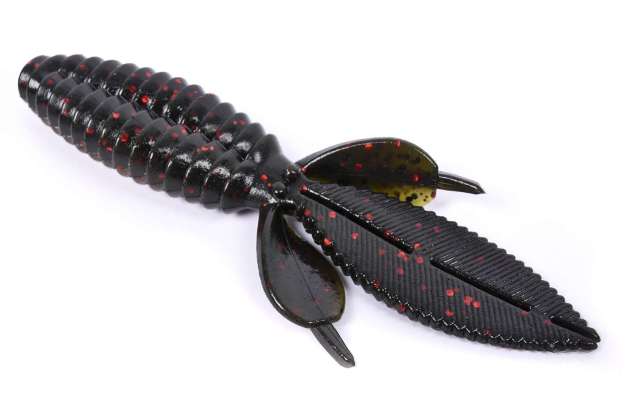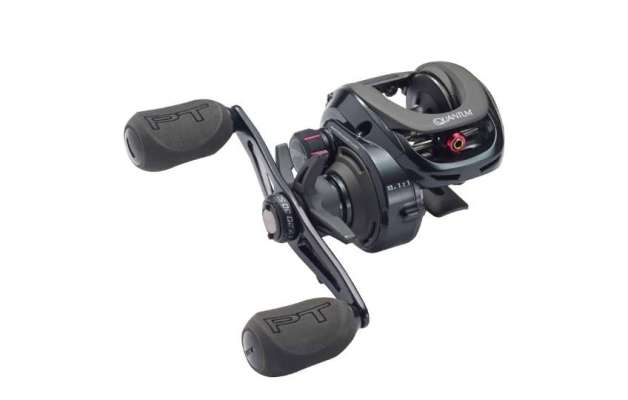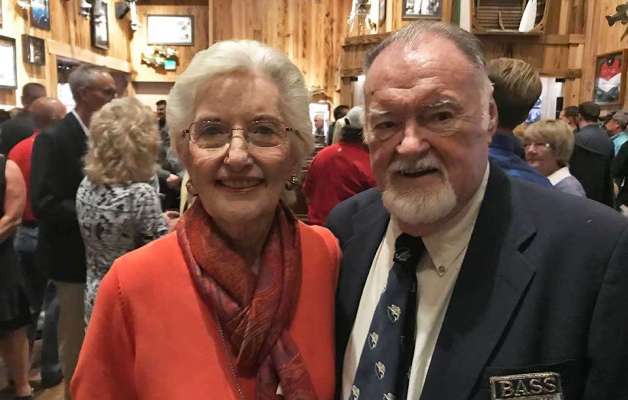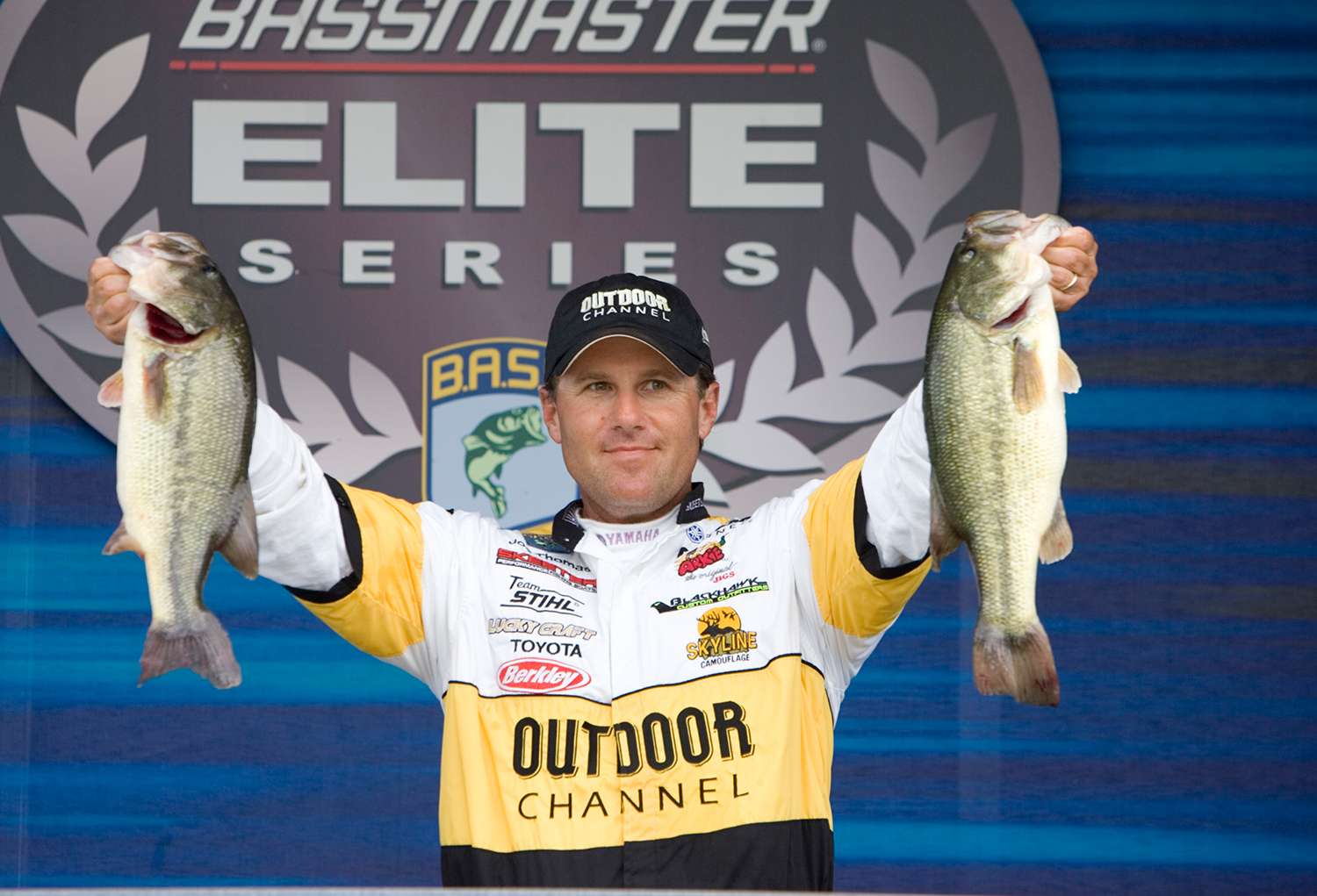
Today, a substantial number of bass pros have blogs – whether it’s on their own website, a column on Bassmaster.com, or even just postings on their social media pages. In 1992, though, many anglers didn’t even have computers or email addresses. The word “blog,” derived from “weblog,” wouldn’t be coined for a few more years.
While the technology wasn’t there yet, Bassmaster Senior Writer Tim Tucker saw that fishing fans were hungry for more insight into their favorite sport. He’d already edited popular books including Roland Martin’s 101 Bass-Catching Secrets and two volumes of the Secrets of America’s Best Bass Pros, but for his next act he wanted to pull back the curtain and produce a product that was less about “how to” and more of an unfiltered look behind the scenes.
He considered several top pros but eventually settled on Ohio’s Joe Thomas, who was just barely 30 when they started the project. He’d won the $100,000 top prize in the Red Man All American in 1990, and he’d qualified for the 1987, 1990 and 1991 Bassmaster Classics, but he was hardly a known commodity in the vein of Roland Martin or Rick Clunn.
“When Tim came to me, we had already worked together on three or four segments for his books, and he had interviewed me several times at tournaments,” Thomas recalled. “He was a fixture of the tournament trail, and I was very comfortable working with him. I was blown away that he would pick me over someone like Hank Parker. Tim was a visionary of the sport. He understood personalities, and he told me that the reason he picked me was that he knew I would lay it all out there.”
The project became a book entitled Diary of a Bass Pro. There had certainly been books that mined this subject, most notably Nick Taylor’s 1988 Bass Wars, which followed veterans like Rick Clunn (yes, Clunn was a veteran 30 years ago) and young guns like Randy Moseley and Randy Blaukat, but the Thomas/Tucker collaboration would be the first one written in the first person, from the angler’s point of view.
Tucker gave Thomas a micro-cassette recorder and instructed him to record his thoughts, in detail at the end of every day on the water. “It’s a job, treat it like one,” Thomas recalled the writer telling him. He’d send the tapes off to an assistant for transcription, and Tucker would help get them on paper, but the words belonged almost entirely to the angler.
To this day, Thomas can recall the raw emotion, both good and bad, that made the book a winner. He can quote the words that he wrote upon losing seven in a row at Lake Lanier: “Get the gun.” More than 25 years later, it still stings. On the other hand, he also remembers learning during that timeframe that his wife Diane was pregnant with their first child Ryan, who today is nearly the same age as Thomas was when the book was written. He didn’t qualify for the Classic that year, but her due date was the same day as the first practice day. “The bottom line is that if this baby is born healthy, all of this fishing stuff won’t seem quite as important,” he wrote. “Compared to that, fishing isn’t a life-or-death matter.”
Tucker pushed Thomas to take some chances with the book’s format. They recounted a December 1991 tournament at Lake Lanier in a minute-by-minute format, and Thomas still considers that “the best part.” Elsewhere they deviated from the pure diary format into a Q&A section, a chapter on the business side of fishing, and tournament fishing tips.
“I feel like I was 100 percent honest,” Thomas said. “The only place that I held back was a couple of times I felt that I got raw deals from a few sponsorship deals. I could’ve definitely thrown some people under the bus, but I refused to do that.”
While they could take certain chances in the formatting, the fact that they were self-publishing the book and didn’t know if it would sell meant that they had to be budget-conscious, too. That’s why the photos inside are a stark black-and-white instead of full color. The cover is mostly black, which did not age well in a paperback, but Thomas believes that the photo of him dressed mostly in red and holding the $100,000 All American check was so visually arresting and helped to spur sales.
After Tucker spent so much time in Thomas’ world, at the end of the process he brought the angler onto his playing field. “When we were done, Tim said give me three days, and we locked ourselves in a room to go through it line by line and edit it. He let me be an active participant and in the end we cut hardly anything. The book was thicker than we thought it was going to be.”
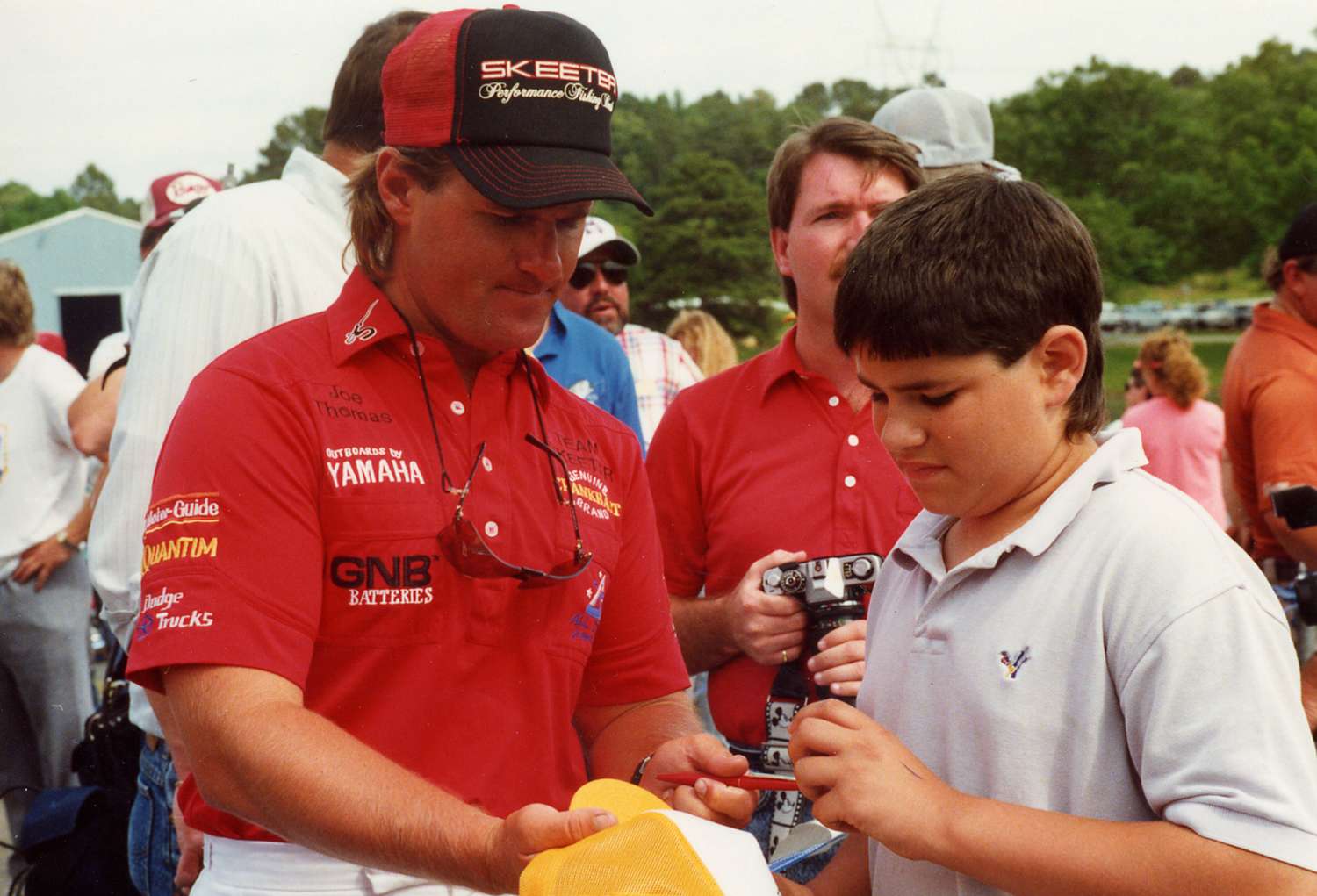
Critical reception
Because they were testing largely uncharted territory, Tucker and Thomas didn’t know how the book would sell, or how it would be received by the industry. They needn’t have worried because the feedback was almost entirely positive.
Thomas recalled that many of his peers were jealous that he’d had this unique opportunity to tell his story to a wider audience. “A lot of them thought it should’ve been them, and I was cool with that. Maybe I didn’t deserve it given where I was in my career, but I bet 90 percent of them read it, some of them a couple of times.”
His sponsors loved the exposure, too. At the time, Thomas ran a Skeeter boat and he remembers that the company brass thought it was “amazing.” In his mind it validated that they had “gone out on a limb,” taking a chance on a young pro who might not yet have measured up to the achievements of their other pro-staffers like Rick Clunn.
Most of all, Thomas said, the fans, hungry for any insight into their heroes’ lives – as they still are today – “ate it up.”
“I can’t remember exactly how many we sold, maybe 10,000,” he said. “But it seems like I signed 100,000 of them. To this day I still get one now and then to sign, often with Tim’s signature already on it.”
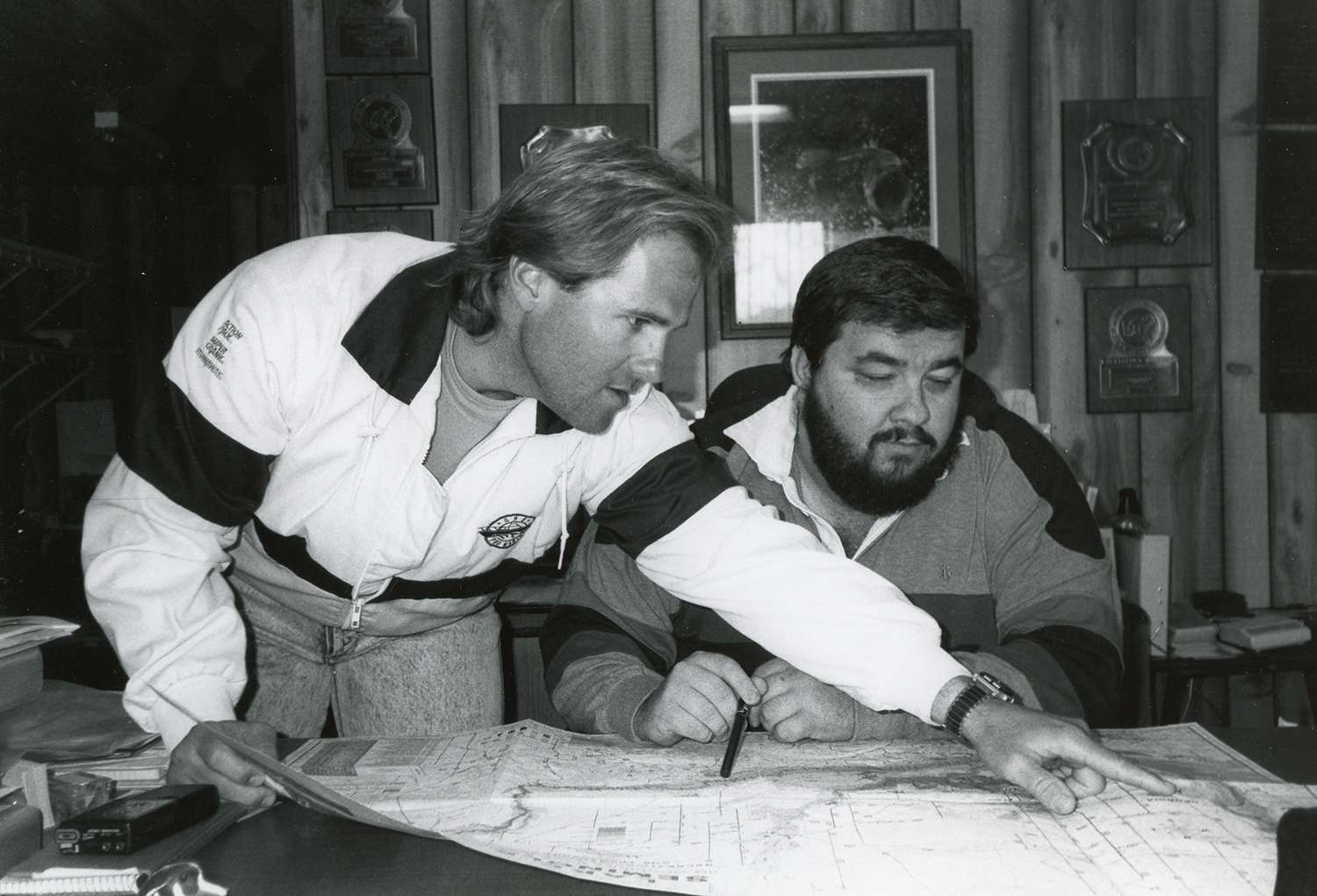
Tucker’s legacy
In 2007, 15 years after the publication of the book, Tucker was the sole fatality in an automobile accident in Florida. His son Kyle, then 10, and another passenger survived the crash.
A decade later, Thomas said, “I think the fishing world has probably forgot what they lost. Tim was ahead of his time.” Thomas referred to Tucker as “the hardest working man in bass fishing,” because he inserted himself into the stories he told, riding with Thomas during practice for the infamously cold November 1991 event on Oklahoma’s Grand Lake (the picture he took is captioned “The coldest bass I’ve ever caught”). Thomas recalls Tucker sitting on the hotel room bed and firing questions into the bathroom as he showered – anything to get the story.
He was certainly an innovator. In addition to books like Diary of a Bass Pro, and articles in a wide variety of magazines and newspapers, Tucker hosted B.A.S.S. Insider Radio, produced instructional audio tapes and prepared a newsletter series called “Pro Angling Insider” that dealt with the sponsorship side of the sport. He was also a past president of the Southeastern Outdoor Press Association and the Florida Outdoor Writers Association.
“I lost a friend,” Thomas said. “But that pales in comparison to the two young children who last their dad, and his wife Darlene, who lost a husband. We butted heads a lot over the years. He would say when he thought something should be done a certain way, and he was almost always right.”
Thomas the storyteller
Thomas continued competing in B.A.S.S. events through the first season of the Elite Series, fishing a total of 231 events and earning nearly $400,000 in cumulative winnings. He came close to winning individual events on multiple occasions, most recently in 2003 at a Bassmaster Tour event on Lake Hamilton in Arkansas, where he finished second to Ron Shuffield by a mere 14 ounces. But he only qualified for one more Classic after publication of the book, the 1994 championship on High Rock Lake.
After leaving the Elite Series, Thomas fished the FLW Tour full time from 2007 through 2011, but with an increasing number of business obligations, he never recaptured the consistent success that he’d had earlier in his career.
“I think that 31-year-old Joe Thomas would be a little disappointed that Joe Thomas never won the Bassmaster Classic,” Thomas said recently. “But I think that he would be proud of me as a family guy, as a person making a great living in the outdoors for over 30 years. I’m in that first generation of people that never worked outside of the fishing industry. I came straight out of college and made a living with a rod and reel. That younger Joe Thomas would also be proud that I never stepped on anyone on the way up – after 30 years of doing this, I can still look in the mirror and know that I did it the right way. I’m proof that at the end of the day good guys don’t always finish last.”
While Thomas hasn’t fished competitively since 2011, he remains actively involved in the industry through his television efforts. A few years after the publication of Diary of a Bass Pro, the young Outdoor Channel approached Thomas to sponsor him, and to also build upon his book with a television series entitled “Angler on Tour.” The Series ran for seven years and provided an even more intense look into the day-to-day ups and downs of life as a professional angler. Subsequently, he has hosted two other Outdoor Channel fishing shows, including “Pelican’s Ultimate Match Fishing” and “Stihl’s Reel in the Outdoors,” both in their 12th seasons. He credits that longstanding success not only to his hard work, but also to the early collaborations with Tucker.
“Tim gave me credibility,” Thomas said. “I don’t think he could ever know how much he helped me. He taught me to tell a story, whether it was in writing or on TV.”

